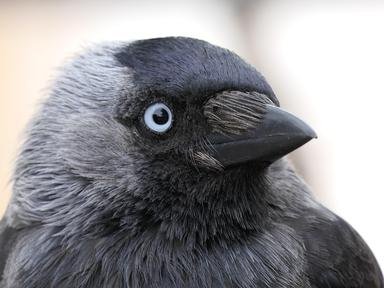Quiz Answer Key and Fun Facts
1. The first colour is blue.
Which of these birds is commonly found on garden feeders in Britain?
2. The next colour is yellow.
Which of these names is NOT a bird found in Britain?
3. There are a dozen or so British birds with black in their name.
Which of these four birds is also known as a 'tystie'?
4. It's time to look at some grey birds.
Three of these birds are relatively common in Britain. Which one is not found in Britain?
5. Now we go for gold.
Which is the only one of these four British birds that would be completely at ease underwater?
6. Red can be an obvious feature of a bird's plumage so is often included in a bird's name.
Which of these birds is a wader?
7. Approximately half of all bird species belong to the order Passeriformes or perching birds.
Which of these 'green' British birds belong to that order?
8. Now for a quick look at birds whose names feature slightly more unusual colours.
A 1944 British movie was based upon the discovery of a pair of rare birds which were breeding in The Cotswolds. The local people were determined to protect the birds and their nest. The Latin name of the bird, Anthus campestris, was used frequently throughout the film. What was the name of the movie?
9. Some black and white birds include the word pie or pied in their name.
Which of these is not the name of a British bird?
10. Sometimes one colour just isn't enough! If you were lucky it would be possible to see three of these birds in Britain.
Which one is a fake name?
Source: Author
Mutchisman
This quiz was reviewed by FunTrivia editor
crisw before going online.
Any errors found in FunTrivia content are routinely corrected through our feedback system.

